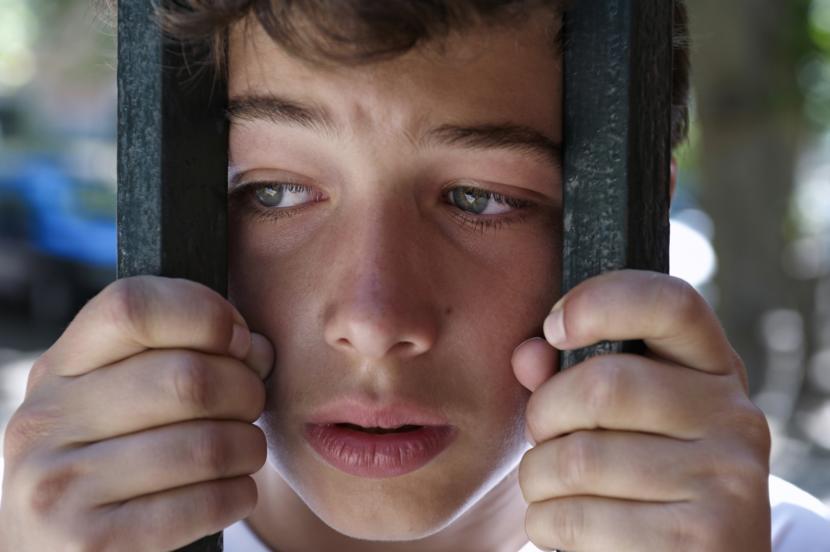Everything You Need To Know About Agoraphobia

Agoraphobia is an anxiety disorder in which you feel extremely fearful of places and situations that are uncomfortable and dangerous according to you. These are the places that make you feel trapped and assume that the escape might be difficult in the case of a panic attack, such as an elevator, a public transportation, being in a crowd or other confined places.
Anxiety can overcome any human being in several circumstances. Extreme anxiety disorder needs special attention and treatment. Various methodology and medications are adopted to bring down the instances of panic attacks and reduce the fearful episodes.
Human beings spend too much time worrying about frightful thoughts and also keep thinking about negative things, always anticipating that troubles are on the way; are putting their body in an alert and anxious mode. The mind is flooded with anxious thoughts. Hence the body starts anticipating that “wrong things” will happen and every time the same thought process goes on, anxiety increases to a level where there can be striking panic attacks.
Anxiety thus becomes habitual. The entire perspective of our lives will become distorted – continuously thinking negative thoughts. We often keep thinking of situations where there is no way out or no better future for us. Sometimes people think that this is the end of the earth or their life and there is nothing to look forward to so on and so forth. Such thoughts can cause serious health disorders too. Too much of negative thinking can lead to heart attacks and stroke too. We will feel a lack of energy & enthusiasm and may feel lethargic all the time.
According to The National Institute of Mental Health (NIMH), 0.8 percent of American adults have agoraphobia and about 40% of cases are considered severe. In more advanced cases, agoraphobia can be very disabling. In most cases, people with agoraphobia realize that their fear is irrational, but they can’t do anything about it. As a result, the disorder starts interfering with their personal relationships and performance at school or work.
In ancient Greece the market place was called as agora. Hence fear of public places and crowds was termed as agoraphobia. This syndrome will be fearful for the people to be in shops, open spaces, or to travelling alone in buses, trains or flights. These patients also have a fear of experiencing embarrassing moments, anticipating them in fact. What if I fall down, what if I let go of the bag I am carrying – these are “what if” thoughts which are very much like anticipating trouble by those suffering from agoraphobia. They always fear that they will be helpless in situations which can be difficult and hence try to avoid them totally. Agoraphobia is treated by the medical practitioners like any other phobias such as social phobia, claustrophobia and so on.
Agoraphobia is a combination of genetic and environmental factors. Few factors which can bring in panic attacks are – death in the family, stressful situations like a divorce, separation from parents or siblings, post trauma disorder, post surgery anxiety. Those suffering from agoraphobia are at a high risk of depression. Other syndromes like obsessive disorders, post traumatic disorders, death in the family, attending court cases, witnessing an accident can also bring in Agoraphobia.
Symptoms of Agoraphobia
A person suffering from agoraphobia may experience the following symptoms, which can be mild to severe. These symptoms can be so severe that they can be classified as “panic attacks” or “panic syndrome”.
- Afraid of being alone in any situation
- Afraid of being in crowded places
- Afraid of leaving their home for extended periods of time
- Afraid of losing control in a public place
- Afraid of being in places where escape would be difficult, such as a car or elevator
- Detached from others
- Anxious or agitated
In addition to that, you may also have signs and symptoms associated with panic attacks such as:
- Racing heart – heart beats very fast and they will accompanied with palpitations
- Chest pain – shooting and tingling pain felt in the chest region
- Trouble breathing – shortness of breath, a feeling of gasping and struggling for breath
- Dizziness – feeling faint all of a sudden
- Trembling – can start shivering suddenly
- Choking – difficulty in swallowing even bile
- Sweating – cold or hot sweats
- Sudden flushing or chills – they can feel hot or cold at the same time
- Upset stomach or diarrhea – digestive system will show the symptoms of panic attacks with stomach upset episodes
- Nausea – feeling of stomach churning will induce nausea in the patient during the panic attack. Dehydration may also be present as a result.
- Tingling sensations or numbness – blood flow slows down and hence blood circulation will get affected resulting in an increased sense of feeling of minor changes in the body, like the blood flow or extremes like feeling numbness or fatigue sets in.
Causes of Agoraphobia
While the exact reason isn’t known, there are several factors that may increase the risk of developing agoraphobia. Some of them are:
- Depression
- Another type of anxiety disorder, such as obsessive-compulsive disorder (OCD) or generalized anxiety disorder (GAD)
- Other phobias, such as social phobia and claustrophobia
- Substance abuse
- A family history of agoraphobia
- A history of physical or sexual abuse
Although Agoraphobia is rare and less than 1% of people in the U.S. have it, it is more common in women. In fact, women are 2-3X more likely to have this phobia than men, and it's more common in young adults and teenagers. It usually begins in early adulthood, but symptoms of the condition can surface at any age.
Clinical finding show that women can tend to become restricting themselves to be more “home bound” where as men can become “alcoholic”, if left untreated. Hence timely diagnosis and treatment are needed for these patients.
There are two very particular ideas that are critical to agoraphobia, which show the severity of this disorder. They are as follows:
- Patients start feeling and thinking about dooms day thoughts that the thoughts themselves become very powerful and the patient can lose control of his/her behavior.
- Patients start thinking that they would be trapped in elevators and airplanes, or on a bridge or in a tunnel or there can be predators in a shopping mall or in a public place, waiting to attack them.
Treatment of Agoraphobia
This disorder can be so severe that it can affect the patient’s social life and critically their career too. Hence these patients have to be taken to a medical practitioner for timely help and treatment. A step-wise treatment methodology is approached by the medical practitioner to treat agoraphobia and any other underlying phobias the patient is facing with. A thorough understanding of the family history and medical history is noted too.
Sometimes a patient suffering from depression due to diseases like heart ailments, diabetes, and high blood pressure can also start having symptoms of agoraphobia. Your doctor may use any of the following methods or a combination of all to treat agoraphobia:
1) Psychotherapy: Psychotherapy involves meeting with a therapist on a regular basis for a face to face counseling session. In this session, you can talk about your fears and problems that may be disturbing you.
2) Cognitive Behavioral Therapy (CBT): Cognitive behavioral therapy (CBT) teaches you new ways to think about or face stressful situations by replacing the vague thoughts with healthy thoughts. The therapy will help you be less afraid and regain a sense of control in your life.
In addition, deep breathing techniques, yoga therapy and meditations are taught to the patients to inculcate and practice whenever there is a panic attack. This has to be done consciously.
3) Exposure Therapy: This is another therapy that can help you overcome your fears. In this treatment, you’re gently and slowly exposed to the places or situations you fear. As a result, with the continued treatment, your fear diminishes over time.
Self help methods are also taught to the patients.
- Focusing : the patient is advised to focus on something non threatening like the time on the watch, items placed in the super market, counting the number of shops in the row, counting the number of bulbs and taking time to breathe deeply.
- Visualizing positive thoughts or thinking of nature’s beauty – Few doctors suggest that visualizing mountains, rivers, trees and so on can calm the mind in a few minutes quickly. Also bringing to mind positive thoughts or happy thoughts can also calm down the person quickly.
- Following a routine in life, with a systematic approach and with a healthy diet and regular exercise regime can also bring in the desired change.
- Not fearing the panic attack – A therapist can advise the patient to keep thinking these words – “this too shall pass” repeatedly which will lessen the fear. The trick is to lull the mind to a good extent of calmness fast.
- Learning the act of forgiveness – the depression that we face as a result of the negative thoughts will soon vanish once we master the act of forgiveness. The inner strength of the patient will resurface. This is again a self help method which will bring in good and positive results.
- Meditation and yoga therapy can also be suggested to reduce the frequency of anxiety attacks. These methods have proven time and again to be a boon in case of any kind of disorder.
4) Medications: Some of the medicines that your doctor might suggest to relieve your agoraphobia or panic attack symptoms are:
- Selective Serotonin Reuptake Inhibitors (SSRIs) such as Prozac or Paxil
- Selective Serotonin And Norepinephrine Reuptake Inhibitors such as Effexor or Cymbalta
- Tricyclic Antidepressants such as Elavil or nortriptyline Pamelor
- Anti-Anxiety Medications, such As Xanax or Klonopin
Medicines prescribed for agoraphobia can usually have side effects like light headedness, dizziness, drowsiness, confusion and loss of balance since they are basically tranquilizers. Hence they should be carefully advised and even the course of medication also has to be monitored.
The Bottom Line
In addition to the above-mentioned treatment, lifestyle changes may also help a person reduce everyday anxiety. Exercise daily, eat a healthy diet and practice daily medication to fight the onset of panic attacks and improve your quality of life.
Self help is always the best help. Along with help and advice from a medical practitioner, learning self help techniques, bringing in a positive outlook in life, mingling with positive minded people, seeking help from friends and family can be very supportive. Psychotherapeutic restructuring is found to be very useful in treating patients suffering from agoraphobia.
This treatment involves getting the patient into discussing things out in open, with the intention to replace irrational and negative thinking in them with a positive mindset. Sharing one’s problems as well as plans and achievements in life with the support group can bring in a sense of belonging, which will reduce the anxiety attacks naturally.












